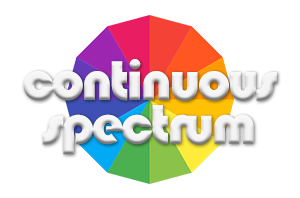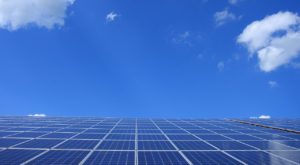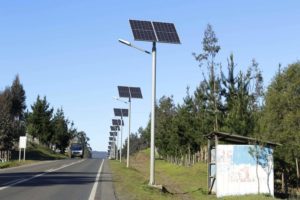How Does Outdoor Solar Lighting Work?
In the age where there is an ardent call for environmental protection and conservation, renewable energy sources also came to light. And, among the more popular renewable energy sources in the world today is Solar Energy. This is the science behind solar lights commonly used outdoors.
Outdoor solar lights or solar lights in general was once difficult to acquire. There’s the product being scarce and expensive; the installation was a complex process. But with technological developments on solar energy and solar lighting, products are now sold off-the-shelf and even online. The prices too, while still a bit on the high side, have gone down to that level where many can already afford. As outdoor solar lights run on a renewable energy source, end-users are then presented an opportunity for savings on energy bills in the long run. They don’t need to connect to the grid since the sun is the ultimate source and it’s for free. Another plus is that there’s no complicated wiring to run them in.
But before rushing to get your hands on solar lighting, you need to understand how solar lights work. This will be helpful so you would know how many you would need, where to lay them out in your yard, what type of solar lighting do you need and other questions that will be answered if you understand how they work.
Understanding Solar Energy
To understand how outdoor solar lighting works, you first need to know the basic - solar energy. What comes to your mind when you think of the word solar? Probably, top of mind would be the solar system. It is called as such since it is a collection of planetary bodies that orbit around the star in this system - the sun.
The dictionary sets the meaning of solar as anything related to or determined by the sun. Thus, when we speak of solar energy or solar power we know immediately that it is energy coming from the sun. Without sounding too scientific, solar energy is when the energy from the sun’s rays are being harnessed and then converted into electricity. It is this type of energy that allows solar lights to shine or run for a period even after the sun has already gone down.
So how is the sun’s rays converted into electricity, you might ask. This process is exactly how an outdoor solar lighting works. It can best be explained if we look at the components that make up a solar light.
Components of a Solar Light
There are three main components that make up a solar light:
Solar Panel
Battery
LED Light Bulb
Solar Panel
Solar light works because of what we call a photovoltaic effect which is a process of generating electricity in a photovoltaic cell when exposed to direct sunlight. In the case of this photovoltaic application in solar lights, the radiation is the sunlight and the devices are what we call the solar cells. You can see these solar cells in the dark panel at the top of your solar lights. These solar cells combined into modules make up your solar panel.
There are three features of a solar cell that must be present to make it work. First is the absorption of sunlight which generates what we call excitons. As light passes through the solar panel the negatively charged electrons are “excited” and thus push them into the positively-charged spaces. This is the second feature that must be present in a solar cell - the separation of opposite types of charged carriers.
The third feature is of equal importance - the positively-charged spaces transfer these electrons as direct electricity current to an external circuit which, in this case, is the battery. Electricity is transferred through wires that are embedded in the solar panel.
The solar panel comes in different chemical types, there’s monosilicon, polysilicon, cadmium telluride, copper indium gallium selenide and many others. In choosing your solar lights, you also need to know the operating voltage of the solar panel, its power output and the working current.
Battery
The battery stores the electricity transferred into it through the solar panel. So, as sunlight is being converted into electricity, the battery is charged throughout the day. The battery then supplies the electricity to the lamp or bulb when it is turned on at night.
There are two known solar light batteries:
1. Nickel-cadmium (NiCd)
An NiCd or NiCad battery uses nickel oxide hydroxide and metallic cadmium as electrodes. It is rechargeable with a lifespan of one to two years, on the average. It can handle a high rate of charges and discharges or high amp loads. The downside though is since it uses cadmium, a highly toxic metal, it is seen as unsafe for the environment especially when not disposed of properly.
2. Nickel-metal Hydride (NiMH)
Like the NiCD, NiMH uses nickel oxide hydroxide for positive electrodes. The negative electrode uses alloy which is hydrogen-absorbing, instead of the highly toxic cadmium. NiMH is said to have a higher capacity than NiCD. It can also counter overcharging and draining or over-discharging. Since it does not use any harmful toxins, it is environment friendly. Its limitations though include a rapid self-discharge while on storage and it suddenly cuts the power instead of slowly draining.
The battery is seen as the heart of your solar light and if you have a defective battery, you cannot get the optimal lighting that your solar light is capable of providing.
3. Lead Acid
Tried and tested. Lead acid battery is the first and the oldest rechargeable battery in existence. It has been around for more than 150 years since the time it was developed in 1859 by Gaston Plante. You may not be aware but lead acid is the type of battery that helps power cars, UPS and scooters. When not in use, it will self-discharge at a rate of only 2 - 5% a month, hence you can store it unused for a longer time. It doesn’t need complex maintenance processes. However, it’s life cycle is shorter than the other kinds of batteries and you would need to replace them after a number of cycles.
4. Lithium-Ion
This is the type of battery that you see in smartphones, laptops and other portable electronic gadgets. It is widely available in the market especially since it just takes little time to recharge against other types of batteries. Generally, its self discharge rate is only 8 percent a month and the battery can last for a very long time, about 500 - 2000 cycles. The downside is that it is very expensive and cannot tolerate very low temperatures.
The battery is seen as the heart of your solar light and if you have a defective battery, you cannot get the optimal lighting that your solar light is capable of providing.
LED Light Bulb
When your solar panel stops converting sunlight into electricity because night has fallen, the photoreceptors which your solar lights come with detect this and then turn on the light. When the light is turned on, this is how you can say that your solar light works. The bulb that is commonly used right now is the light-emitting diodes or LED as it is the most energy-efficient lighting technology. It uses less energy and lasts way longer than its ancestors, incandescent and fluorescent. The LED bulb is lit throughout the night as the battery continues to supply it with electricity.
In choosing your solar light, you have to check the light color, color temperature, the number of lamp beads, the lumens value, its output power and the working temperature. See if the model you are looking at will meet your lighting needs.
The Solar Light Process in Simple Terms
Having learned about the role of each component of your solar lights, we can now deduce how the system works in a more simple discussion.
Sunlight passes through the solar panel that converts sunlight into electricity, creating an electron stream that is then transferred as electricity to the battery which stores it until it is used. At night, the light is turned on when the photoreceptors detect that night has fallen. Light runs through the night until electricity is all used up or when the photoreceptors shut it down as it detects daylight. This goes on in a daily cycle.
You just have to remember that for the solar light to efficiently work, it needs adequate sunlight. So, place it in an area or position the solar panel at an angle where it can receive the most sunlight in the day. If you know the process and you know where to place your solar lights, you will get the most out of it. Your yard will look well-illuminated too in the night.


